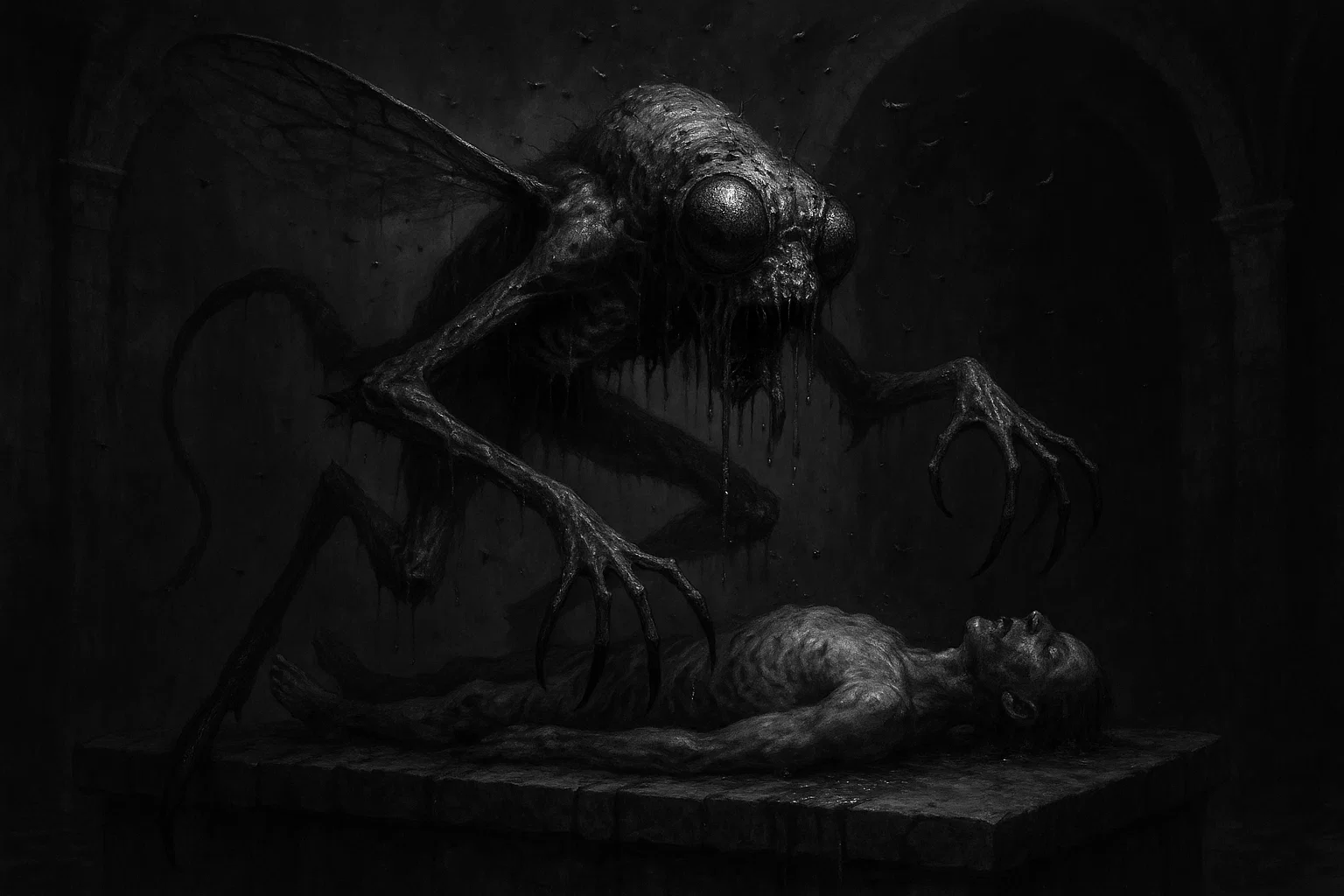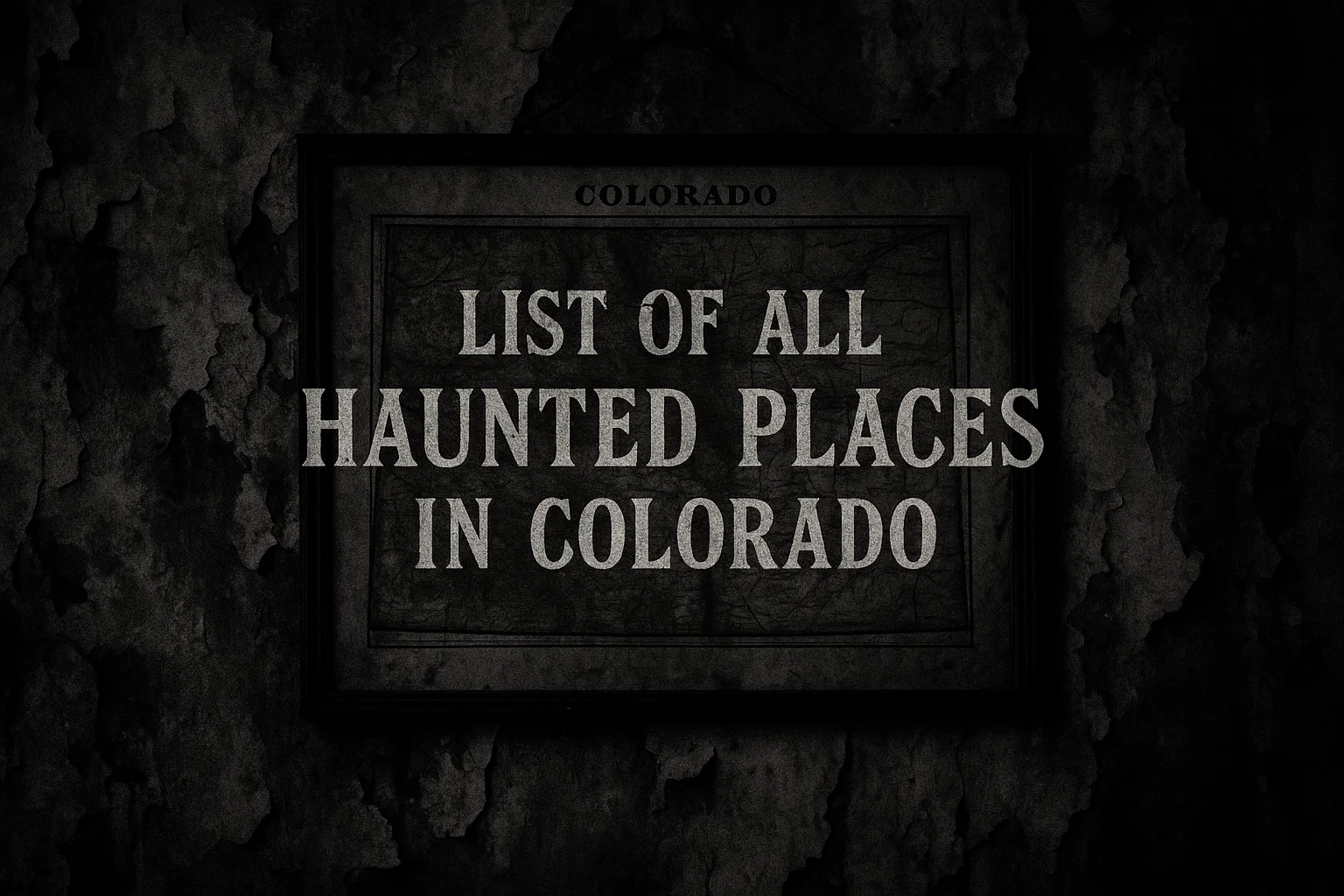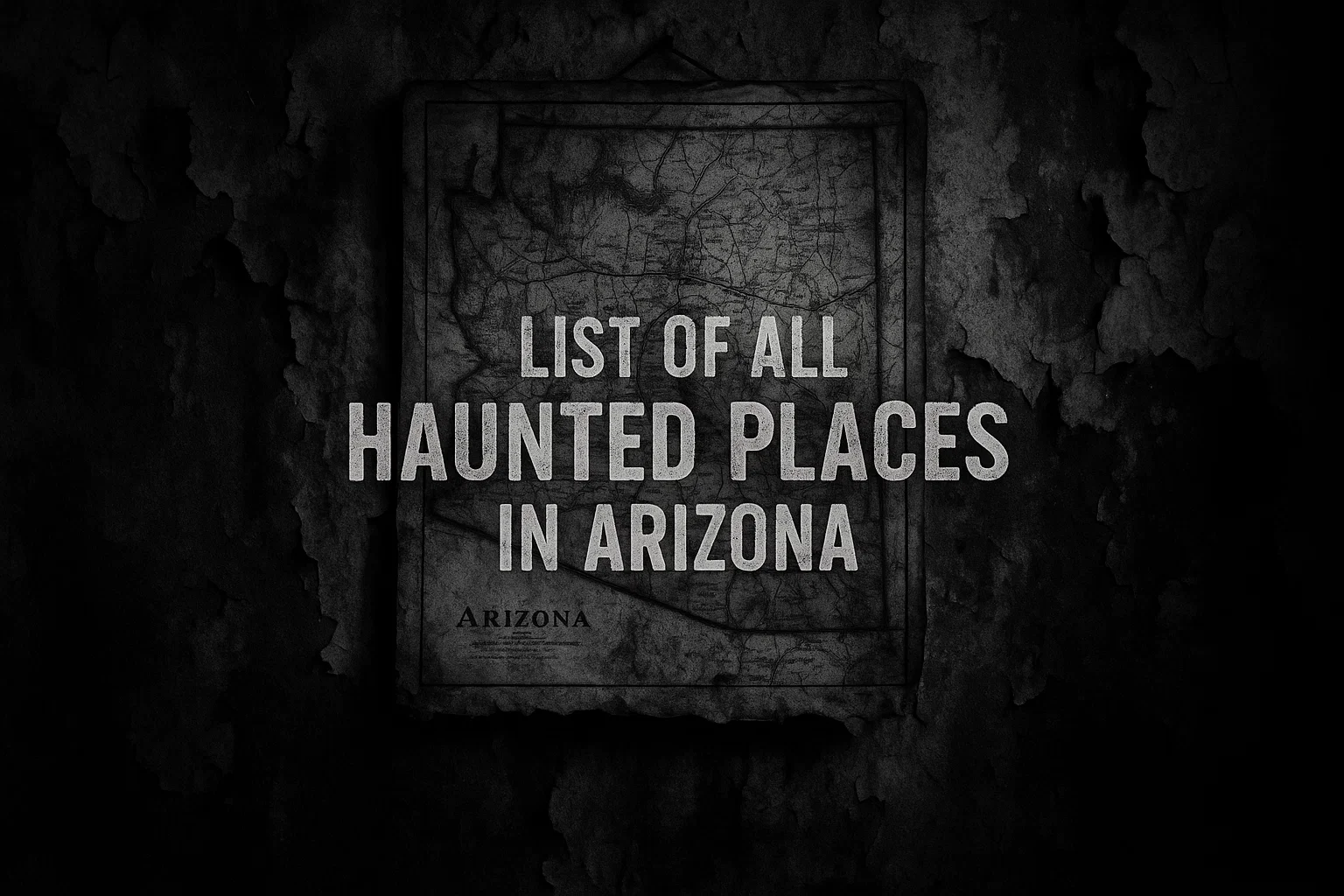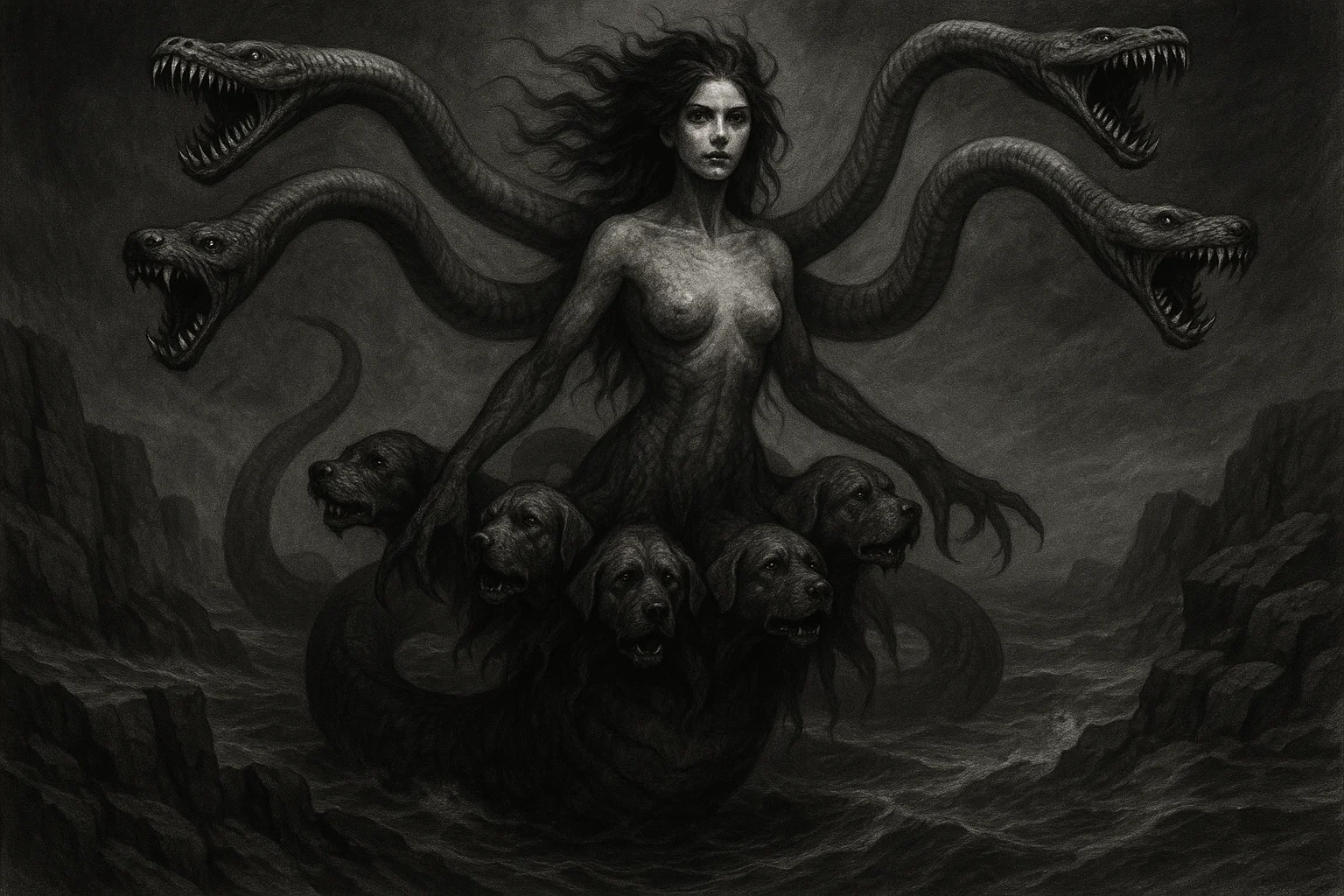Druj Nasu is a spectral harbinger of decay, a female demon whose insatiable hunger for corruption echoes through the sacred texts of the Avesta. Known as the Corpse Fiend or the Demon of Death Pollution, Druj Nasu descends from the frozen north—Zoroastrianism’s realm of hell—to seize the newly departed, transforming the sanctity of death into a vector for cosmic impurity.
Her buzzing wings and insidious touch embody the primal clash between order and chaos, tempting the faithful with the allure of neglect and defilement, yet her story is but the threshold to deeper revelations of ritual defiance and eternal vigilance.
This entity, woven into the fabric of one of the world’s oldest monotheistic traditions, influences everything from funerary rites to moral philosophy, where confronting Druj Nasu becomes a metaphor for humanity’s battle against falsehood. As whispers of her fly-like form and contaminating gaze persist in folklore, they remind us that purity is not passive but a hard-won triumph over the encroaching void.
Summary
Key Information
| Category | Details |
|---|---|
| Name | Druj Nasu, Nasu, Nasa, Nas, Nasuš, Druznāš (Pahlavi), Tūžmāš (Pahlavi variant) |
| Title | Corpse Fiend, Demon of Death Pollution, She-Fiend (Jādūg), Most Evil Fiend (Anaspa), Greatest Polluter of Ahura Mazda’s World |
| Gender | Female |
| Role | Personification of corpse contamination, decay, and ritual impurity; catalyst for decomposition and spread of defilement |
| Hierarchy | Daeva (demon class) under Angra Mainyu (Ahriman); one of the six arch-demons opposing the Amesha Spentas; subordinate to the chief daeva Paitisha in some enumerations |
| Servitors | Insect swarms (flies, horseflies); minor khrafstras (noxious creatures); animated undead from contaminated corpses |
| Superior Demon | Angra Mainyu (Ahriman), the Destructive Spirit and lord of the daevas |
| Powers | Instant contamination of corpses and contacts; generation of pollution through touch or proximity; flight and rapid descent; impregnation via human greed; resistance to unqualified purifications |
| Appearance | Raging fly with crooked knees, projecting tail/buttocks, ceaseless droning; in Pahlavi texts, elongated hands and feet longer than a human’s; grotesque, noxious form evoking disgust |
| Etymology | Avestan drūjō.nāuš: drūj (“lie,” “falsehood,” “deceiver”) + nāsu (“corpse,” “dead matter”); symbolizes moral and physical corruption |
| Associated Figures | Angra Mainyu (creator/master); Sraosha (opposer); Zarathustra (prophet who vows to smite her); dogs (four-eyed yellow or white with yellow ears) for expulsion |
| Weaknesses | Gaze of specific dogs (sagdid ritual); recitations of Gathas (bišāmrūta, trišāmrūta, caθrušāmrūta); invocations of Amesha Spentas, Sraosha, and Ahuna Vairya; nine-night purification with gomez and water |
| Opposing Angel/Saint | Sraosha (Obedience, divine messenger who strikes her); Asha Vahishta (Best Truth, principle opposing druj) |
| Equipment/Tools | None inherent; associated with ritual counters like furrows (kash), gomez (bull urine), haoma branches, and incense for purification |
| Pantheon | Zoroastrian (Iranian); part of the daeva hierarchy in the Avestan corpus |
Etymology
The name Druj Nasu is a profound linguistic artifact from the Avestan language, the sacred tongue of the Zoroastrian scriptures, which were composed between roughly 1500 and 500 BCE.
At its core lies drūj, a feminine noun denoting “the Lie”—not mere falsehood but a cosmic force of deception, disorder, and moral inversion, standing in eternal opposition to aša, the principle of truth, order, and righteousness. This root evokes a deeper Indo-Iranian heritage, cognate with Vedic druḥ (“to afflict” or “devastate”) and Proto-Indo-European dʰrewgʰ-, suggesting an ancient concept of distortion or affliction that “blackens” the world, much like shadows eclipsing light.
Compounded with nāsu, meaning “corpse” or “dead matter”—encompassing not just bodies but severed hair, nails, and any putrefying remnants—Druj Nasu translates literally to “the Corpse Lie” or “Deceiving Dead Matter.” This etymology underscores her dual essence: a deceiver (drūj) who weaponizes mortality (nāsu) to undermine creation.
In Younger Avestan texts, such as the Vendidad, she is drūjō.nāuš, the “she-fiend of the corpse,” while Pahlavi adaptations shift to Druznāš or Tūžmāš, reflecting the phonetic evolution in Middle Persian. Scholars note that drūj extends beyond her to a class of female demons, all bearers of untruth, amplifying her as the archetype of impurity.
This nomenclature is no accident; it embeds Zoroastrian dualism, where language itself combats chaos. By naming her, the faithful invoke aša to unmask the lie, transforming etymological precision into a tool of exorcism.
In broader Iranian linguistics, echoes can be found in Old Persian drauga (“lie” in royal inscriptions) and even Norse draugr (“undead revenant”), hinting at shared Indo-European motifs of deceitful decay. Thus, Druj Nasu‘s name is a verbal ward, a reminder that words, like rituals, pierce the veil of corruption.
You May Also Like: Bushyasta: The Zoroastrian Demon of Sloth and Eternal Sleep
What Does the Demon Druj Nasu Look Like?
Druj Nasu manifests as a grotesque parody of life, her form a visceral assault on the senses designed to evoke revulsion and urgency.
In the vivid depictions of the Avesta, she appears as a raging fly, her body a buzzing abomination with knees bent crookedly like thorns and a tail protruding obscenely, as if mocking the grace of creation. This insectile guise—complete with ceaseless droning wings—symbolizes relentless invasion, her compound eyes gleaming with malevolent hunger as she hurtles from the northern abyss.
Her physical traits amplify this horror: elongated, claw-like hands and feet, described in Pahlavi texts as surpassing human proportions, enable her to grasp and defile with unnatural reach. Dripping with foul moisture and exuding the stench of rot, she embodies unchecked putrefaction, her touch a catalyst for swelling decay.
No beauty adorns her; instead, she is the “most evil fiend,” a shape-shifter of pollution whose fly-form belies a deeper, shadowy femininity—a jādūg or she-fiend whose presence warps purity into peril. To behold Druj Nasu is to confront mortality’s raw edge, her traits a deliberate emblem of the druj that faithful must gaze upon only through ritual safeguards.
Historical and Mythological Background
Zoroastrian mythology casts Druj Nasu as a pivotal agent in the cosmic war between Ahura Mazda’s benevolent order and Angra Mainyu’s destructive chaos, her legends rooted in the Avesta’s purity laws rather than epic battles.
Emerging from the northern hell-realm—symbolizing cold isolation and undeath—she personifies the immediate peril of mortality, rushing to claim corpses and spread nasu (dead matter pollution). These tales, preserved in oral recitations before Sassanian codification around the 3rd to 6th centuries CE, emphasize ritual over heroism, portraying Druj Nasu as an ever-present threat to the faithful’s sanctity.
Her myths intertwine with Zoroaster’s (also known as Zarathustra’s) prophetic mission, framing death not as an end but as a battleground for the soul. Influenced by Indo-Iranian roots, where death demons akin to Vedic druḥ afflicted the living, Druj Nasu evolved into Zoroastrianism’s emblem of defilement, shaping funerary practices, such as sky burials, to thwart her grasp.
These narratives, devoid of romantic quests, underscore ethical vigilance: neglect invites her, while purity repels. As global Zoroastrian communities dwindled after the Islamic conquests, their lore endured among Parsis and Iranian adherents, a cautionary thread in the faith’s resilient tapestry.
The Descent Upon the Corpse
In the foundational myth of Vendidad Fargard 7, Druj Nasu‘s assault unfolds with chilling immediacy upon a worshipper’s death. As the soul departs, she plummets from the corpse-eaters’ northern lair, a fly-demon with arrow-like speed, seizing the body to ignite decomposition.
Ahura Mazda warns Zarathustra: if unchecked, her pollution radiates outward, tainting earth, water, and kin for generations. The tale stresses timing—within the first three days, her hold strengthens unless interrupted by the sagdid, the dog’s gaze that shatters her grip like sunlight on frost.
This legend gave rise to Zoroastrian exposure rites, where bodies are laid on dakhmas (towers of silence) to invite scavenging birds, thereby denying Druj Nasu dominion. No heroic slayer emerges; instead, communal vigilance—furrows drawn, prayers chanted—ensures the dead’s honorable release. Echoing broader Avestan themes, the story warns that death’s impurity tests the living’s resolve, with Druj Nasu as the tempter, urging hasty burial, which would entomb pollution eternally.
You May Also Like: Who Is Aka Manah? The Terrifying Demon of Wicked Intention
The Failed Assault on Zarathustra
Vendidad Fargard 19 narrates Druj Nasu‘s thwarted bid to slay the prophet, dispatched by Angra Mainyu from the daevas’ dark council.
As Buiti—the deceiving aspect of Druj Nasu—she rushes forth, only to recoil before Zarathustra’s radiant glory, confessing her impotence: “I see no way to kill Spitama Zarathustra, so great is the glory of the holy Zarathustra.” Angra Mainyu, in fury, unleashes storms and sorcery, but the prophet invokes the Amesha Spentas, scattering the demon horde.
This episode, set in the mythic dawn of revelation, highlights Druj Nasu‘s cunning as a schemer, allying with daevas like Pairika Knathaiti in plots of unseen death. Zarathustra’s vow—”I will smite the Nasu, a creature of the Daeva“—propels his ministry, transforming personal peril into universal mandate.
Unlike triumphant dragon-slayings in other myths, this tale resolves through invocation, affirming that Druj Nasu yields not to force but to unyielding truth, her retreat a prelude to Frashokereti, the world’s final purification.
Impregnation and the Cycle of Greed
A darker facet appears in Vendidad Fargard 18, where Sraosha confronts Druj Nasu amid a ritual dialogue, striking her form to probe her origins. She retorts that her “offspring” spawn not from carnal union but from human avarice: whenever Zoroastrians succumb to greed, she conceives anew, birthing legions of pollution. This myth associates personal vice with cosmic harm, with Druj Nasu as the midwife of greed, her fly-swarms multiplying like unchecked desires.
Rooted in Younger Avestan ethics, the legend warns that ethical lapses empower her, perpetuating a cycle where impurity begets more impurity. Sraosha’s blows—symbolizing the triumph of obedience—temporarily expel her, but her return hinges on humanity’s choices. In Pahlavi extensions, such as the Bundahishn, this evolves into her role as Ahriman’s vanguard, with her grotesque elongation serving as a mark of gluttonous excess.
These intertwined tales form the core of Zoroastrianism: Druj Nasu is no isolated monster, but the embodiment of druj’s seductive persistence, countered only by vigilant piety.
Historical Mentions
| Text/Grimoire | Year (Approximate Composition) | Description | Excerpt |
|---|---|---|---|
| Vendidad (Vidēvdād), Fargard 7 | c. 1000–500 BCE (Younger Avestan) | Core text on purity laws; details Druj Nasu‘s immediate rush to corpses, her fly-form, and defiling reach; prescribes dog-gaze and furrow rituals to expel her. | “Immediately, the she-fiend, named Druj Nasu, comes flying from the corpse-eaters in the north to this house. She is the most evil fiend, she who flies forth from the corpse-eaters… In the shape of a raging fly, with knees and tail sticking out, droning without end, does the Druj Nasu rush upon the dead” (Vd. 7.1–2). |
| Vendidad (Vidēvdād), Fargard 19 | c. 1000–500 BCE (Younger Avestan) | Dialogic myth where Angra Mainyu sics Druj Nasu (as Buiti) on Zarathustra; she fails due to his glory; includes invocations to drive her from faithful homes. | “From the region of the north… forth rushed Angra Mainyu… ‘Druj, rush down and kill him,’ O holy Zarathushtra! The Druj came rushing along, the demon Buiti, who is deceiving, unseen death… ‘I see no way to kill Spitama Zarathushtra, so great is the glory'” (Vd. 19.1, 3). |
| Vendidad (Vidēvdād), Fargard 18 | c. 1000–500 BCE (Younger Avestan) | Sraosha’s confrontation with Druj Nasu reveals her impregnation by human greed, spawning pollution, and emphasizing her as a daeva creature to be smitten. | “Thus Zarathustra answered Angra Mainyu: ‘O evil-doer, Angra Mainyu! I will smite the creation of the Daeva; I will smite the Nasu, a creature of the Daeva'” (Vd. 18.5, cross-referenced in 19). |
| Bundahishn (Greater Bundahishn), Chapter 28 | c. 9th century CE (Middle Persian) | Cosmological compendium; describes Druj Nasu as Ahriman’s pollution agent, with elongated limbs; links her to corpse decay and northern hell. | “Nas dēw ān kē rēmanīh ud nasruštīh kunēd kē nasā xwānēnd… [She is] the one who causes the pollution and contamination… with longer and more powerful hands and feet than any human” (Bund. 28.29, adapted). |
| Yasna 38 | c. 1500–1000 BCE (Old Avestan, Gathas) | Hymnic praise of Asha; indirectly references Druj Nasu as part of the druj opposing divine order, to be driven away by truth. | “We worship Asha Vahishta… who drives away the Druj” (Y. 38.3). |
| Denkard, Book 9 | c. 9th–10th century CE (Middle Persian) | Encyclopedic summary of Avesta; elaborates Druj Nasu‘s role in defilement laws, her expulsion via Sraosha’s utterances. | “The Druj Nasu… attacks the body when it comes into contact with dead matter… [driven away by] the Bāj-e nasrūšt, the utterance against pollution” (Dk. 9.3, referencing Vd.). |
You May Also Like: The Dark Demon Seth: God of Chaos in Egyptian Mythology
Druj Nasu’s Powers and Abilities
Druj Nasu wields powers uniquely attuned to her domain of death’s aftermath, distinguishing her from generic tempters by her focus on physical and ritual corruption rather than overt seduction or violence.
Unlike wrathful daevas who incite battles, she thrives in subtlety, her abilities manifesting as insidious escalation: a single touch ignites exponential decay, turning a corpse into a nexus of contagion that leaps to the living. This corruption tempts through neglect—whispering that impurity is inevitable, eroding the will to purify and fostering despair that aligns souls with Angra Mainyu’s lie.
Her primary prowess lies in contamination, where proximity alone spreads nasu, defiling earth, water, and flesh for miles if unchecked. She exploits human flaws like greed, “impregnating” herself to birth swarms that amplify chaos, corrupting communities by preying on isolation or haste in rites.
In temptation, Druj Nasu doesn’t bargain; she erodes resolve, making the faithful question the worth of purity amid mortality’s grim reality, thus drawing them into Druj’s embrace. These traits, drawn from Avestan texts, underscore her as the architect of decay, her influence a slow poison that undermines Zoroastrian harmony.
| Power/Ability | Description | Source | How It Tempts/Corrupts Humans |
|---|---|---|---|
| Corpse Contamination | Instant seizure of dead bodies, catalyzing decomposition and radiating pollution to contacts (nose, eyes, etc.); unique as it scales with exposure time. | Vendidad Fargard 7 | Tempts haste in burial, leading to communal defilement; corrupts by normalizing impurity, eroding ritual discipline. |
| Flight and Rapid Descent | Arrow-like speed from northern hell, evading detection; common flight but uniquely tied to droning buzz that disorients. | Vendidad Fargard 7.2 | Corrupts through unseen invasion, fostering paranoia and doubt in protective rites, tempting isolation. |
| Impregnation by Vice | Spawns offspring (swarms) via human greed; distinguishes her as vice’s literal breeder, not just inciter. | Vendidad Fargard 18 | Tempts avarice as “harmless,” corrupting ethics by linking personal flaws to multiplied chaos. |
| Defilement Radiation | Corrupts through fear of touch, tempting avoidance of communal duties, and fostering selfish survival. | Vendidad Fargard 3.14 | Corrupts through fear of touch, tempting avoidance of communal duties and fostering selfish survival. |
| Resistance to Purification | Grows stronger if rites are botched; common demonic resilience but amplified by her pollution feedback. | Vendidad Fargard 9.48 | Tempts unqualified rituals out of desperation, corrupting faith by turning safeguards into amplifiers of harm. |
How to Counter Druj Nasu’s Powers
Countering Druj Nasu demands precise Zoroastrian rituals, transforming vulnerability into empowerment through layered protections that honor Ahura Mazda’s order.
At death’s cusp, the sagdid rite—leading a four-eyed yellow dog or white dog with yellow ears to gaze upon the corpse—shatters her hold, her fly-form fleeing the canine’s purifying stare, a motif rooted in dogs’ role as guardians against daevas. This immediate ward prevents initial contamination, buying time for exposure on dakhmas where vultures consume the body, denying her feast.
For the living tainted by her touch, a nine-night purification unfolds: immersion in bull gomez (urine) four times and water twice, coupled with recitations of Ashem Vohu (hundredfold) and Ahuna Vairya (two hundredfold), under starlight to invoke celestial aid.
Furrows (kash) drawn around the afflicted with iron nails and haoma branches encircle impurity, while Sraosha’s Bāj-e Nasrūšt—chanted at dawn—strikes her like thunder, expelling defilement. Invocations of Amesha Spentas, Mithra, and Zarathustra’s Law fortify the soul, countering her greed-spawned swarms with ethical resolve.
These methods extend metaphorically: daily prayers, such as Kəm Nā Mazdā, repel her whispers, while communal vigilance—never carrying corpses alone—thwarts radiation. In essence, countering Druj Nasu is an active choice of aša over druj, her powers yielding to a disciplined piety that renews the purity of creation.
You May Also Like: The Demon Ammit: Crocodile-Headed Devourer of the Dead
Druj Nasu’s Role in the Hierarchy of Hell
In Zoroastrian demonology, Druj Nasu occupies a mid-tier yet pivotal rank among the daevas, the adversarial spirits spawned by Angra Mainyu to unravel Ahura Mazda’s creation.
As a female daeva of the druj class—embodying “the Lie” in its most tangible, polluting form—she serves as a specialized lieutenant, not the supreme architect of evil like her lord Ahriman (Angra Mainyu), the Destructive Spirit who commands all daevas from the northern hell. Texts like Vendidad 19.1 hail Ahriman as “daevanam daevo,” chief of daevas, with Druj Nasu as his executor in matters of death, her role amplifying his broader assault on life.
She outranks minor khrafstras (vermin-demons) and serves below arch-daevas, such as Aeshma (Wrath) or Aka Manah (Evil Mind), who oppose Amesha Spentas in cosmic pairs. The Vendidad 10.9 lists her among six antitheses, countering Spenta Armaiti (Devotion).
Her subjects include fly swarms and nascent undead, as well as tools for spreading nasu. Relationships with peers, such as Pairika (seductive witches), involve collaborative plots, as seen in assaults on Zarathustra. Pahlavi works like Bundahishn 27.51 to elevate her as pollution’s vanguard, her hierarchy reflecting Zoroastrian dualism: a cog in Ahriman’s machine, vital for erosion but fated for defeat in Frashokereti, when Sraosha binds her eternally.
This positioning underscores her tactical importance—death’s gateway tempts souls toward the druj—yet subordinates her to Ahriman’s will, her rank a reminder that even potent demons bow to the Prince of Darkness.
Astrological Associations and Symbolism
Zoroastrianism’s celestial framework, less zodiacal than elemental, ties Druj Nasu to omens of decay and northern maleficence, her symbolism evoking imbalance in the cosmic order. She aligns with the destructive north, realm of Ahriman and winter’s stasis, symbolizing disrupted cycles where death pollutes renewal.
Her fly-form evokes the corrupted flow of air—stagnant winds carrying rot—while her druj essence opposes solar truth, lurking in eclipses or comets as portents of impurity. Numbers like three (days to full hold) or nine (purification nights) mark her rhythm, metals such as tarnished iron (for furrows) ward her, and stones like obsidian (absorbing negativity) echo her shadowy pull. Colors of decay—putrid green, ashen gray—clothe her iconography, with no zodiac but loose ties to Saturnine heaviness or Capricorn’s barren earth.
These associations, drawn from Avestan auguries, frame Druj Nasu as imbalance’s emblem: her presence signals ethical drift, tempting inversion of asha’s harmony. In ritual symbolism, she warns against excess, her fly a metaphor for unchecked desires swarming the soul.
| Association | Details |
|---|---|
| Element | Corrupted Air (stagnant winds, droning buzz); opposes purifying Fire |
| Direction | North (hell’s frozen gate, source of her descent) |
| Number | 3 (initial hold on corpse); 9 (nights for counter-ritual) |
| Metal | Iron (for protective furrows; tarnished form resists her) |
| Stone/Crystal | Obsidian (absorbs pollution); avoids clear quartz (truth’s clarity) |
| Color | Putrid Green (decay); Ashen Gray (undeath); opposes radiant White |
| Zodiac/Planet | Saturn (heaviness of decay); Northern omens (comets as defilement signs) |
You May Also Like: Borley Rectory Ghosts: England’s Most Haunted House?
Druj Nasu’s Sigil
No canonical sigil graces Druj Nasu in Zoroastrian texts, as the faith shuns demonic evocation for invocation of divine wards; her “mark” is instead the profane desecration she leaves—swollen corpses or fly-riddled shadows—repelled by sacred geometries like the furrow circle.
Modern occult adaptations, uninfluenced by the Avesta, might portray her as a stylized fly with crooked limbs inscribed in a druj-rune (a reversed asha-vahishta glyph), symbolizing inverted truth; however, such interpretations are speculative, derived from later grimoires that blend Iranian lore with Western esotericism. In authentic tradition, her “sigil” is absence: the unmarked grave she corrupts, countered by haoma-bound talismans etched with Sraosha’s name.
This non-iconic approach aligns with Zoroastrian aniconism, where Druj Nasu‘s power lies in evasion, not summoning; to “draw” her is to invite peril, her true seal the buzz of neglected purity.
| Symbol/Item | Association/Meaning | Use in Rituals |
|---|---|---|
| Fly | Embodiment of swift, invasive decay; her core form as polluter | Protection: effigies burned to mock her; summoning (speculative): swarm invocation for curses |
| Corpse Icon | Represents nasu defilement; severed hair/nails as her “offspring” | Protection: buried with iron to bind her; avoidance in rites to prevent grasp |
| Northern Wind | Source from hell’s gate; chaotic air carrying contagion | Protection: chanted against in windless enclosures; ritual: incense to redirect |
| Gomez (Bull Urine) | Purifier opposing her moisture-drip; sacred fluid of life | Protection: nine immersions to expel; no offering—solely for cleansing |
| Dog’s Gaze | Canine expulsion of her fly-form; symbol of vigilant truth | Summoning (rare, folk): averted to invite; primary: sagdid for immediate ward |
| Furrow (Kash) | Encircling barrier mimicking asha’s order; iron-lined to trap impurity | Protection: drawn around afflicted; ritual tool for containing her radiation |
Comparison with Other Demons
| Demon | Origin/Pantheon | Gender | Primary Role/Powers | Key Differences from Druj Nasu | Temptation Style |
|---|---|---|---|---|---|
| Lilith | Mesopotamian/Jewish | Female | Night demon; seduces men, harms infants; flight and shape-shifting | Focuses on seduction and infanticide vs. corpse pollution; independent queen, not hierarchical servant | Sexual allure and independence |
| Lamia | Greek | Female | Child-eater; serpentine vampire draining life | Preys on living youth via beauty/serpents vs. post-mortem decay; tragic origin story contrasts demonic birth | Vengeful maternal rage |
| Ahriman (Angra Mainyu) | Zoroastrian | Male | Debauchery causes menstruation via Ahriman’s kiss | Supreme overlord vs. mid-tier executor; broad creation of evil vs. specialized defilement | Cosmic despair and total inversion |
| Aeshma | Zoroastrian | Male | Wrath demon; incites violence with bloody mace | Fuels rage/war vs. subtle corruption; direct combatant, not infiltrator | Fury and bloody conflict |
| Aka Manah | Zoroastrian | Male | Evil mind; sows doubt, bad thoughts | Mental temptation vs. physical pollution; opposes Vohu Manah directly, not ritual-specific | Whispered heresy and skepticism |
| Jahi | Zoroastrian | Female | Debauchery; causes menstruation via Ahriman’s kiss | Lust and bodily shame vs. death impurity; awakens evil through sensuality | Erotic vice and harlotry |
| Azi Dahaka | Zoroastrian | Male | Three-headed dragon; tyranny, drought | Monstrous conqueror vs. insidious fly; physical terror, not contamination spread | Tyrannical oppression |
| Pairika (Knathaiti) | Zoroastrian | Female | Witch-demon; seduction, sorcery | Magical illusion vs. tangible decay; allies in plots but focuses on living ensnarement | Enchanting deceit and spells |
You May Also Like: What Is a Vourdalak? The Horrifying Vampire That Hunts Its Own Family
Conclusion
Druj Nasu endures as Zoroastrianism’s stark emblem of mortality’s peril; her fly-winged shadow is a timeless call to safeguard the sacred amid the inevitability of decay. From Avestan hymns to Parsi dakhmas, she embodies the faith’s profound insight: impurity is not fate but choice, repelled by rituals that weave community and cosmos into harmony. In an age of forgotten rites, her lore urges reflection on the cost of neglect, reminding us that true order blooms from vigilant hearts.
Yet her defeat lies not in oblivion but renewal—Frashokereti’s dawn, where Sraosha’s blow scatters her kin forever. As global echoes of Zoroastrian resilience persist, Druj Nasu challenges us beyond antiquity: to choose asha’s light against druj’s murmur, transforming death’s whisper into life’s enduring song.
This narrative, spanning millennia, affirms the quiet power of the human spirit. In confronting Druj Nasu, we honor the wisdom of our ancestors, ensuring that even in endings, beginnings prevail. May her tale inspire not fear, but the fierce grace of purity reclaimed.







